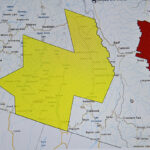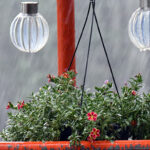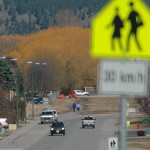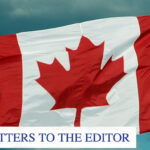Home »

IJC asked to help form plan for transboundary pollution
The ongoing struggle to establish a transboundary plan to deal with pollution in the Elk and Kootenay/Kootenai river watershed today (March 11) reached a positive milestone.
The Ambassador of Canada to the United States, Kirsten Hillman, and the Ambassador of the United States to Canada, David L. Cohen, issued a joint statement on the Elk-Kootenay/Kootenai watershed.
“In furtherance of the Joint Statement issued by Prime Minister Trudeau and President Biden on March 24, 2023, Canada and the United States have reached an understanding on next steps to further bilateral cooperation to reduce and mitigate the impacts of water pollution in the Elk-Kootenay watershed.
“Our two countries are committed to a collaborative, science and Indigenous knowledge based, action-oriented path forward.
“The key elements of this understanding are as follows:
 “Canada and the United States, in partnership with Tribal Nations and Indigenous Peoples, and in a manner consistent with the principles outlined in the United Nations Declaration on the Rights of Indigenous Peoples, have asked the International Joint Commission (IJC), through a joint reference, to assist federal and Indigenous governments, British Columbia, Idaho and Montana, to establish a formal governance structure by June 30, 2024, allowing for co-development of options for future action.
“Canada and the United States, in partnership with Tribal Nations and Indigenous Peoples, and in a manner consistent with the principles outlined in the United Nations Declaration on the Rights of Indigenous Peoples, have asked the International Joint Commission (IJC), through a joint reference, to assist federal and Indigenous governments, British Columbia, Idaho and Montana, to establish a formal governance structure by June 30, 2024, allowing for co-development of options for future action.
“Considering the particular complexity of pollution concerns in this watershed, Canada and the United States have also asked the IJC to establish a two-year Study Board to convene experts and knowledge holders to conduct transparent and coordinated transboundary data and knowledge sharing.
“These actions respond to partner interests in:
- “Gaining a common understanding of pollutants of concern within the Elk-Kootenay watershed;
- “Establishing mechanisms supporting transboundary data, information, and Indigenous knowledge sharing, science and monitoring, assessments of aquatic ecosystem health, and transparent progress reporting; and
- “Understanding and taking steps to reduce and mitigate the impacts of pollution.
“Complementing additional efforts currently underway throughout the Elk-Kootenay watershed, and together with the IJC and our partners in the region, Canada and the United States welcome the opportunity to further our collaboration on this important work.”
The Ktunaxa First Nations of ʔakisq̓nuk, ʔaq̓am, Yaqan Nuʔkiy, and Yaq̓it ʔa·knuqⱡi’it and The Confederated Salish and Kootenai Tribes and Kootenai Tribe of Idaho this morning stated leadership of the transboundary Ktunaxa Nation are encouraged to announce that the United States and Canada, in partnership with the Nation, have finally agreed to ask IJC to study and make recommendations to address the mining pollution in the Elk and Kootenai/y rivers through a joint reference. (Statement from the United States here and Canada here.)
Ktunaxa leadership has been urging Canada and the U.S. to address water pollution in Ktunaxa homelands for over a decade.
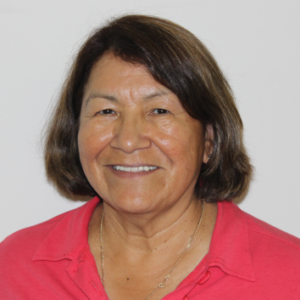
Ktunaxa Nation Council Chair Kathryn Teneese said, “It is good to see that the U.S. and Canada—in partnership with the Ktunaxa Nation— have started collaborating effectively on this issue and are working toward meeting their commitment to reduce and mitigate the mining pollution in the Kootenai/y watershed. However, just as this agreement could not have been reached without the deep involvement of the Ktunaxa Nation, future progress will require meaningful inclusion of Ktunaxa knowledge and stewardship.
“We are setting the foundation for an IJC, and we welcome the IJC Commissioners’ involvement in this issue. We hope this is the beginning of a collaborative, transparent, and effective process that will restore the waterways in the heart of ʔamakʔis Ktunaxa that are vital to the Ktunaxa ʔakⱡsmaknik (people).”
Michael Dolson, Chair of the Confederated Salish and Kootenai Tribes added: “For too long, the U.S. and Canada have stood by while our waters suffered. We are encouraged by the federal governments’ change in direction and the progress that was achieved when we all worked together these past months. We will continue to work tirelessly to restore our rivers and the fish and wildlife that depend upon them. We’re at the beginning of what will likely be a long process, one that will require sustained effort from all governments involved.”
Following the federal and First Nations announcement, George Heyman, B.C.’s Minister of Environment and Climate Change Strategy, Josie Osborne, Minister of Energy, Mines and Low Carbon Innovation, Murray Rankin, Minister of Indigenous Relations and Reconciliation and Nathan Cullen, Minister of Water, Land and Resource Stewardship, released the following joint statement in response to Canada and the United States writing to the International Joint Commission with a plan for the Elk-Kootenay/Kootenai watershed:
“Improving and protecting water quality has always been a key priority for British Columbia. To date, more than $1.4 billion has been invested in implementing the Elk Valley Water Quality Plan, with continued significant investments planned that will roughly double the amount of water-treatment capacity in the Elk Valley by the end of 2027. Through our regulatory activities, we continue to undertake and oversee projects to improve and protect water quality in the Elk-Kootenay/Kootenai watershed.
“B.C. supports the commitment made by Prime Minister Justin Trudeau and President Joe Biden in March 2023. We welcome the joint statement today by the Canadian and American ambassadors that acknowledges the particular complexity of pollution concerns in this watershed and asks the International Joint Commission to convene experts and knowledge holders to conduct transparent and co-ordinated transboundary data and knowledge sharing.
“We have reviewed the proposal for a reference to the International Joint Commission and British Columbia is committed to fully engage in this process. In its proposed role as a neutral facilitator, the International Joint Commission is uniquely positioned to assist in building crucial relationships and trust across this key international watershed. We look forward to collaborating with governments, First Nations and community partners, as we work together to accelerate our joint efforts to enhance and protect water quality in the Elk-Kootenay/Kootenai watershed.
“We welcome the creation of a process that brings together representatives to share progress, validate issues and facts, and gather information in a way that is respectful and inclusive of Indigenous knowledge.
“We have been working with our partners to take a holistic view of this ecosystem and what we need to do to keep it safe. This includes working with First Nations, industry and local governments.
“We see this as an opportunity to build upon existing work and enhance information sharing and transparency to the benefit of the region’s people and ecologically responsible resource development.”
Read the Ktunaxa joint statement from January 2024.
Read the proposal to address transboundary water pollution in the Elk/Kootenai/y watershed.
Lead image: The Elk River merges with the Kootenay River, which flows south-west into the USA before veering back north into Canada at Creston. e-KNOW file photos
e-KNOW
